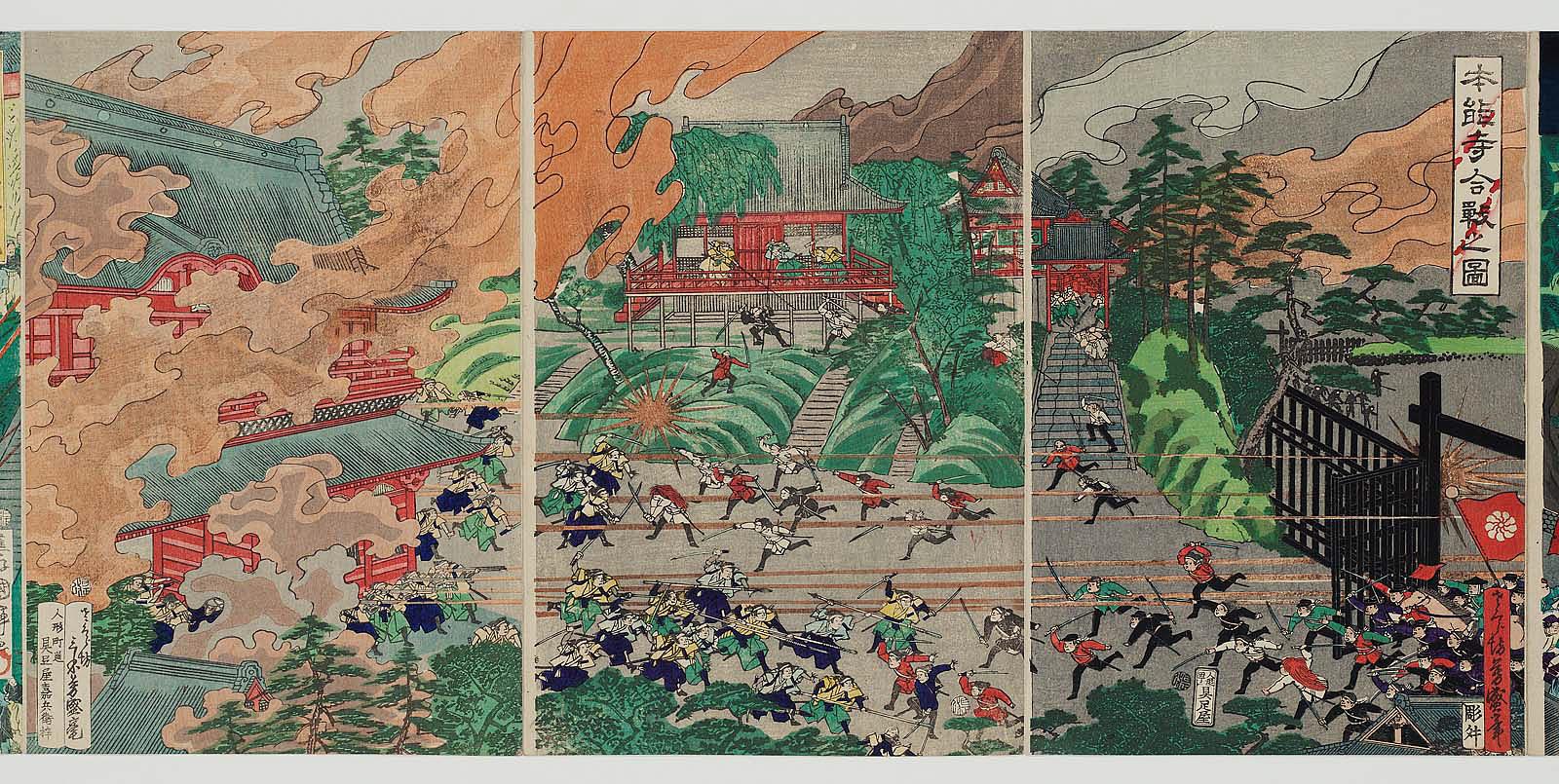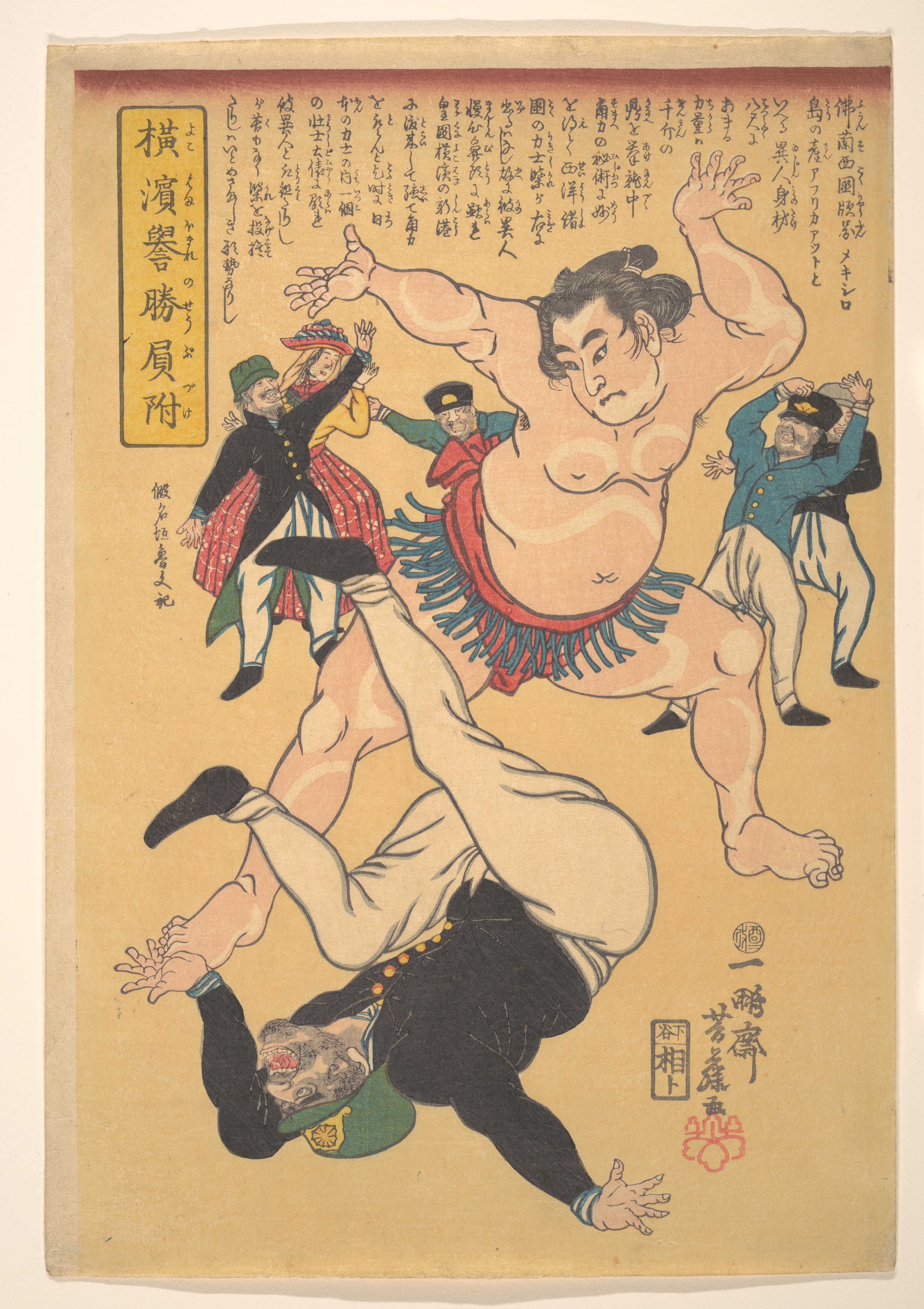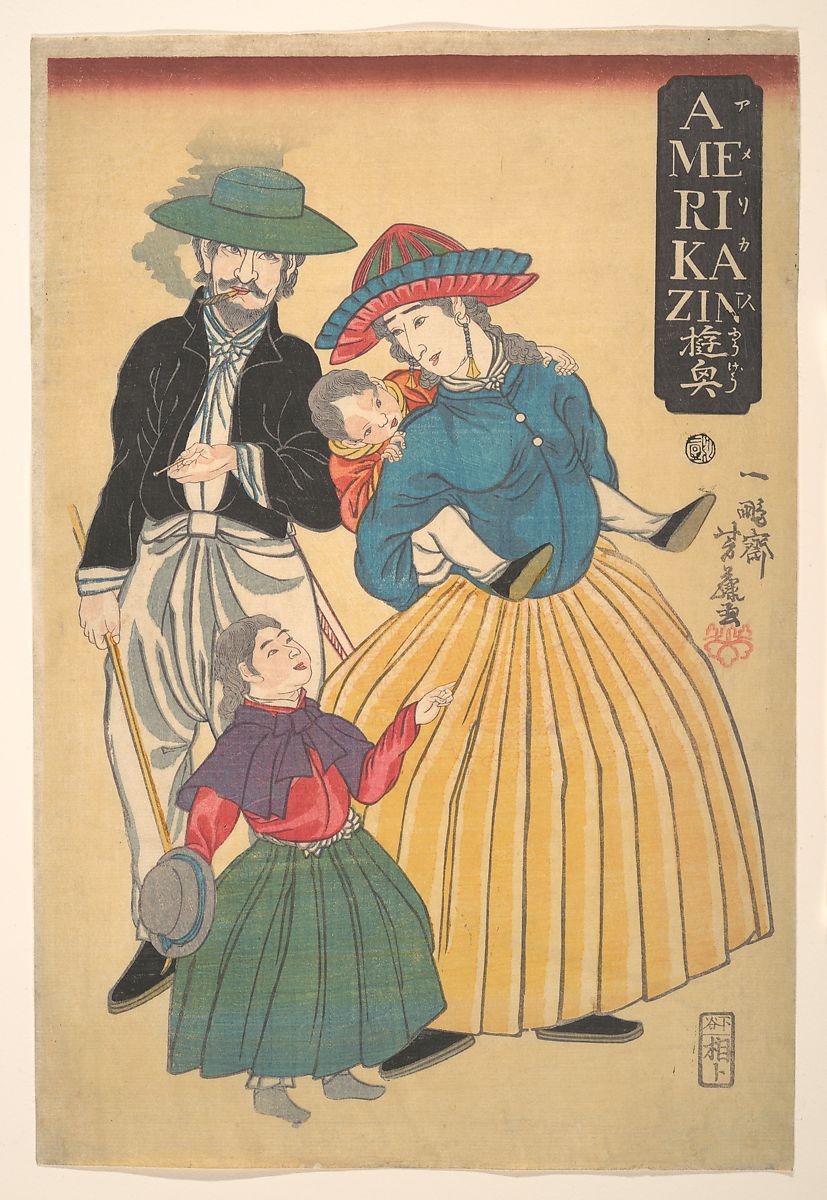Abolishment of the Edo Feudal Hierarchy:
The Successes and Consequences for Japan
Overthrowing of the Bakufu

“The Battle at Honnô-Ji Temple (Honnô-Ji Kassen No Zu).”
Yoshimori, Utagawa, 1869
"Another [memorable year] was the first year of Keiō 慶応 [1865]. Foreign ships had gone to Hyōgo [to press for the opening of the port], and, as ōmetsuke and gaikoku bugyō, I went to Osaka where I received direct orders... 'In accordance with the imperial command, our domain will take charge and kill the barbarians,' they declared. 'Start the expulsion from Kyoto!' they proclaimed."
~ 1891 interview with Yamaguchi Naoki, a former Japanese comissioner for foreign affairs
The bakufu represented the government overruled by the shōgun and stood as the highest power source through the Edo era. Alongside this government, the imperial emperor also had significant political influence within Japanese society and became widely known as a national symbol of patriotism. Soon after Japan signed the Treaty of Kanagawa with the United States, the bakufu quickly found themselves under harsh criticism for their methods of addressing Western infiltration. As a result, revolutions that advocated for the coup of the bakufu government quickly formed with the central goal of restoring power to the Emperor of Japan while simultaneously expelling foreigners from the nation. Famous rally cries such as “sonno joi!” (“Revere the emperor, destroy the barbarians!”) were commonly associated with the political campaign.


“Americans on an Outing (Amerikajin Yūgyō).”
Yoshifuji, Ippōsai, 1861
“Five People Working Like Ten.”
Yoshifuji, Ippōsai, 1861
"Yokohama Sumo Wrestler Defeating a Foreigner."
Yoshifuji Ippōsai, 1861
With criticism towards the bakufu government quickly rising, they urgently needed to take action. The government tried to gain support from daimyo and samurai, only to realize that their assent was more correlated towards the imperial cause. One place in particular—Chōshu—became especially vocal about their disdain towards the bakufu government. They initiated revolts to overthrow the Tokugawa government by taking over their territory and replacing its regime with one of their own. In the end, their attempts were successful, and the imperial administration eventually obtained full power over the nation of Japan.

“Operations Map of the Second Choshu Expedition.”
Ryoma, Sakamoto, 1866